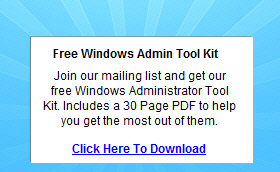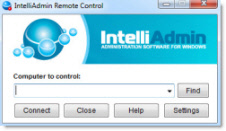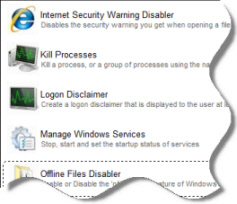OWA and Exchange Activesync is not functioning
NOTE: Didn't know what forum to put this in, so I went with Admin.
I am a fairly new IT guy at my company, so be gentle :)
We are running single server setup, Exchange 2007.
At the start of this week, suddenly the Outlook Web Access and ActiveSync stopped working. I have googled for little over 2 days now, and can't seem to find a proper solution.
I read that removing and reinstalling the Client Access Role could fix this, but it did not.
Signs indicate it's a certificate problem (because when I start Microsoft Outlook I get a security alert notifying me that the security certificate is not valid, however I can access and send mail with Outlook.), however when I look through the certificates
(mmc.exe->certificates) I can't find any certificates with an expiration date that correlates with when this problem occurred.
Problem is that I can't seem to locate the proper certificate that has the same expiration date as the one in the alert message.
Whats more is that I can access the login screen of the OWA, but when I try to log in I get an error saying that "The page must be viewed over a secure channel". Which doesn't make sense because I did put https:// at the beginning.
Any help is greatly appreciated.
July 18th, 2012 5:48am
Hi,
Can you run Get-ExchangeCertificate | fl in Exchange Management Shell (EMS) and post the output?Martina Miskovic
Free Windows Admin Tool Kit Click here and download it now
July 18th, 2012 6:30am
Sure,
AccessRules : {System.Security.AccessControl.CryptoKeyAccessRule, System
.Security.AccessControl.CryptoKeyAccessRule}
CertificateDomains : {pat.hostname.no}
HasPrivateKey : True
IsSelfSigned : False
Issuer : CN=hostname-NOFRESCA001-CA, DC=hostname, DC=no
NotAfter : 10/20/2012 10:12:35 PM
NotBefore : 11/3/2011 2:00:34 PM
PublicKeySize : 1024
RootCAType : Enterprise
SerialNumber : 698D1518000100000D60
Services : IMAP, POP
Status : Valid
Subject : CN=pat.hostname.no
Thumbprint : C0775CE01BC7D409C216AA8400AA8A965DCB6A0D
AccessRules : {System.Security.AccessControl.CryptoKeyAccessRule, System
.Security.AccessControl.CryptoKeyAccessRule, System.Securi
ty.AccessControl.CryptoKeyAccessRule, System.Security.Acce
ssControl.CryptoKeyAccessRule, System.Security.AccessContr
ol.CryptoKeyAccessRule, System.Security.AccessControl.Cryp
toKeyAccessRule, System.Security.AccessControl.CryptoKeyAc
cessRule}
CertificateDomains : {pat, pat.hostname.no}
HasPrivateKey : True
IsSelfSigned : True
Issuer : CN=pat
NotAfter : 11/3/2016 11:31:30 AM
NotBefore : 11/3/2011 11:31:30 AM
PublicKeySize : 2048
RootCAType : None
SerialNumber : 3195D5BF40AA27AB4BBBAD0F1390C0EC
Services : IMAP, POP, SMTP
Status : Valid
Subject : CN=pat
Thumbprint : CB9DE4E35086C7F6FA5AE446E88B7C13C1304A23
AccessRules : {System.Security.AccessControl.CryptoKeyAccessRule, System
.Security.AccessControl.CryptoKeyAccessRule}
CertificateDomains : {Pat.hostname.no}
HasPrivateKey : True
IsSelfSigned : True
Issuer : CN=Pat.hostname.no, OU=IT, O=hostname AS, L=Gamle Fredri
kstad, S=Ostfold, C=no
NotAfter : 11/2/2012 5:04:45 PM
NotBefore : 11/3/2011 11:04:45 AM
PublicKeySize : 2048
RootCAType : Unknown
SerialNumber : EC71C11BC02DBC9943BFEB0FCADF7E8B
Services : None
Status : Invalid
Subject : CN=Pat.hostname.no, OU=IT, O=hostname AS, L=Gamle Fredri
kstad, S=Ostfold, C=no
Thumbprint : 569737EDE9984036B8154CAFB475AC448792D47D
AccessRules : {System.Security.AccessControl.CryptoKeyAccessRule, System
.Security.AccessControl.CryptoKeyAccessRule, System.Securi
ty.AccessControl.CryptoKeyAccessRule, System.Security.Acce
ssControl.CryptoKeyAccessRule, System.Security.AccessContr
ol.CryptoKeyAccessRule, System.Security.AccessControl.Cryp
toKeyAccessRule, System.Security.AccessControl.CryptoKeyAc
cessRule}
CertificateDomains : {*.hostname.no}
HasPrivateKey : True
IsSelfSigned : False
Issuer : CN=Buypass Class 2 CA 1, O=Buypass AS-983163327, C=NO
NotAfter : 11/3/2012 9:32:10 AM
NotBefore : 11/3/2011 9:32:10 AM
PublicKeySize : 2048
RootCAType : ThirdParty
SerialNumber : 229C
Services : IIS, SMTP
Status : Valid
Subject : SERIALNUMBER=974349914, CN=*.hostname.no, O=hostname AS,
C=NO
Thumbprint : 4957CC6B98174BF1A5C598D6920E861424A39FC8
AccessRules : {System.Security.AccessControl.CryptoKeyAccessRule, System
.Security.AccessControl.CryptoKeyAccessRule, System.Securi
ty.AccessControl.CryptoKeyAccessRule}
CertificateDomains : {Outlook.hostname.no}
HasPrivateKey : True
IsSelfSigned : False
Issuer : CN=Buypass Class 2 CA 1, O=Buypass AS-983163327, C=NO
NotAfter : 1/25/2013 12:15:57 PM
NotBefore : 1/25/2010 12:15:57 PM
PublicKeySize : 1024
RootCAType : ThirdParty
SerialNumber : 1884
Services : IIS, SMTP
Status : Valid
Subject : SERIALNUMBER=974349914, CN=Outlook.hostname.no, O=PREDIKT
OR AS, C=NO
Thumbprint : C3E7C46FCB0C101B8C00C6324275066797C0B31F
July 18th, 2012 6:35am
What is the name you are using for external access...Outlook.hostname.no ?
Run the below commands and check your settings.
Get-ActiveSyncVirtualDirectory | fl Identity,internalurl,externalurl
Get-ClientAccessServer | fl Identity,*uri*
Get-WebServicesVirtualDirectory | fl Identity,internalurl,extenalurl
Get-OabVirtualDirectory | fl Identity,internalurl,externalurlMartina Miskovic
Free Windows Admin Tool Kit Click here and download it now
July 18th, 2012 6:44am
I use outlook.hostname.no/owa for external access
The commands gave me the following:
Get-ActiveSyncVirtualDirectory | fl Identity,internalurl,externalurl:
Identity : PAT\Microsoft-Server-ActiveSync (Default Web Site)
InternalUrl : https://pat.hostname.no/Microsoft-Server-ActiveSync
ExternalUrl :
------
Get-ClientAccessServer | fl Identity,*uri*:
Identity : PAT
AutoDiscoverServiceInternalUri : https://pat.hostname.no/Autodiscover/Autodiscover.xml
-----------
Get-WebServicesVirtualDirectory | fl Identity,internalurl,extenalurl:
Identity : PAT\EWS (Default Web Site)
InternalUrl : https://pat.hostname.no/EWS/Exchange.asmx
-------
Get-OabVirtualDirectory | fl Identity,internalurl,externalurl:
Identity : PAT\OAB (Default Web Site)
InternalUrl : http://pat.hostname.no/OAB
ExternalUrl :
July 18th, 2012 7:01am
Also ran a check with testexchangeconnectivity.com and got the following:
Weird that it tries port 443 when oma.prediktor.no is only set up with port 80.
Free Windows Admin Tool Kit Click here and download it now
July 18th, 2012 7:11am
Hi,
I think you should check the settings in ISA.
For OWA..https://outlook.hostname.no/owa works. Is it oma or outlook you are using for ActiveSync ?
There's a different certificate installed on ISA compared to the Exchange Server. A bit confusing.
You have many certificates and it'a not an easy task to find out which one you should use.
You have one certificate that it's easy to tell you can delete. (to get the list down)
Remove-ExchangeCertificate -Thumbprint 569737EDE9984036B8154CAFB475AC448792D47D
IF you allow Outlook Anywhere, you really should configure externalURL for OabVirtualDirectory & WebServicesVirtualDirectory and of course also for ActiveSyncVirtualDirectory.
..and I can see that you have a record configured for Autodiscover.Martina Miskovic
July 18th, 2012 7:23am
The problem went away by removing 128-bit encryption on both OWA & AS :)
Thanks for the help
Free Windows Admin Tool Kit Click here and download it now
July 19th, 2012 7:40am
The problem went away by removing 128-bit encryption on both OWA & AS :)
Thanks for the help
Your're Welcome and thanks for the update!Martina Miskovic
July 19th, 2012 2:38pm


